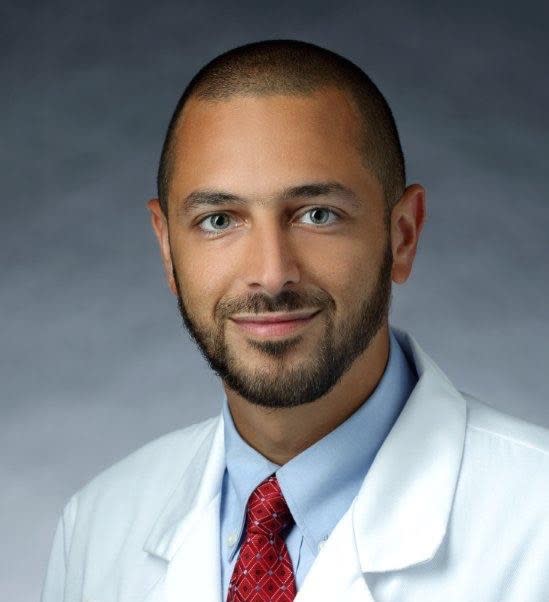Waiting for test results on coronavirus can be hard too — although not as hard as having it
The test for coronavirus gives results in 24 to 48 hours, which can seem like a very long time to someone waiting to hear if they have a potentially lethal illness. But it takes a lot longer if the lab running the testing is backed up and running behind, which is what happened to Dr. Bassem Khalil, who was told to wait about five days to hear back after he was tested on Monday.
“The reason they told me five days is probably because they’re overwhelmed with more testing,” said Khalil, an internist at Georgetown Hospital in Washington, D.C. He started experiencing symptoms that matched the warning signs of COVID-19 last Saturday and as of Thursday was still waiting at home to find out if he was infected by the coronavirus. Khalil, who lives alone, says that the quarantine is “no biggie”; the illness is what is really bad when it all boils down.

His last day working at the hospital was a week earlier, and to his knowledge he wasn’t treating anyone with the virus, but “it’s a new virus. No one knows exactly how many people have it. The testing is not optimal yet, so we’re all kind of exposed,” he said.
In Washington, D.C., there are around 40 confirmed cases, and “we have less than 10 hospitals in the area in D.C., so I know there are a couple at Georgetown, I know that for a fact,” said Khalil. In nearby Virginia, cases have jumped to 94, with 56 in Northern Virginia alone.
On Sunday, Khalil started feeling mild chest pain and had a cough and a low-grade fever. On Monday, he felt ill enough to visit an urgent care facility. Because of his list of symptoms and a heightened chance of exposure to the virus at the hospital, there was no question of whether he should be tested. “It would be hard for me to pinpoint exactly how I got where I got it from or how, but working in a hospital seeing patients, it would be easier to get it, I’m sure,” said Khalil. The clinic told him not to report to work until the results came back.
But getting a test still isn’t that easy today. Dr. Khalil explains that “in the news you hear that there is more testing, but in reality what we are seeing is that unless you meet the criteria, you are not going to be tested.” He explained that showing symptoms still isn’t enough to get just anybody a test. He’s also noted that he “learned recently that for now the testing that is out there has some false negatives.”
“If you have a patient that tested negative but also has symptoms, how do you know that they really have it or not? I don’t know at this point.”
Even though he is still coughing, Khalil is feeling better and believes he is out of danger. As a healthy 37-year-old man who exercises regularly, he falls in the category of individuals who should not exhibit extreme symptoms, but he admitted that being sick, whether with COVID-19 or something else, was “not pleasant, to say the least.”
At the height of his illness, Khalil “woke up on Tuesday morning at 1:30 a.m. with semi-severe abdominal pain on the right side. And I was just like, ‘I have no idea what this could be,’ because I mean as far as we know it affects the lungs. I was reading a little bit, and yes, it’s going to affect liver function, but you wouldn’t think it would cause pain and discomfort like that.”
While this isn’t a common symptom of the coronavirus, Khalil understood that any disease can present differently in different patients. Confused at this abdominal pain, he texted his colleagues “asking if any of their patients had similar symptoms. The ones who had patients said no, but they noticed that some of them had an elevation in the liver functions and some had some GI symptoms, including nausea, vomiting, diarrhea.”
For this doctor, waiting for results and resting is all he can do at this point. He has a lot of faith in his colleagues at Georgetown Hospital and says that “we’re lucky because so far it hasn’t gone to the point where anybody is overwhelmed with lots of cases.” Just like everyone else, Khalil is waiting to see what the effects of social distancing and isolation will be in the unraveling of this virus in the United States.
When asked if he’s worried about the future and the reality of more cases coming in, he explains that “there’s a lot of things happening now to hopefully prevent this influx if it happens. And I mean hopefully, it prevents the influx from happening. But if it happens, then we have enough supplies, enough rooms, enough beds to accommodate as many as possible to avoid being in a situation like other countries.”
When asked how it will feel to be on the frontlines of fighting this disease when he is able to return to work, Khalil demurs. He doesn’t see himself on the frontlines. “We’re all in it together. I mean we’re dealing with this as health care providers from one side, but you’re dealing with it from another side [as the media]. And we’re all working on this together.”
_____
Read more from Yahoo News:


